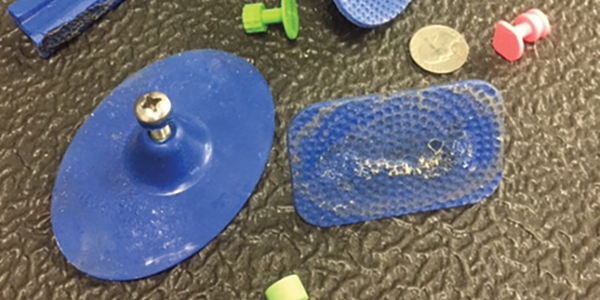In 1992, I was 20 years old and fresh out of school learning the fine art of paintless dent repair (PDR). When I signed up to learn this craft, it was a major secret how the process was done, and when I drove almost 1,000 miles to school, I had literally no idea what the process was that I was going to be doing.
When I arrived for my first day of training, I signed a non-disclosure form that stated I could not tell anyone how the PDR process was performed for 10,000 years anywhere in the universe! In…the…universe.
As I drove around Southern California looking for accounts, I was sure I had the best-kept secret in all the land. No one knew what I did, but sadly I had been lied to. I walked into an auto body supply shop in Temecula, Calif., and met an older gentleman who was easily in his late 70s, maybe early 80s. I was looking for polishing pads, and my company name on the shirt I was wearing caught his eye, so he asked if I did that “dentless” repair. I said, “Why yes I do!” He said, “You guys use the body picks from inside the panel?” I’m sure all the blood drained from my face. He smiled, disappeared into the back and returned with a clanging, banging hanger full of ancient looking PDR tools! “Like these?” he said. That’s when I knew I had been bamboozled by the inventor of PDR himself. I thought to myself, “Well, shoot!”
Old School Meets New
Old school met new. Not really new, more of a different version of what used to be. Dents used to be metal worked and finished using lead filler. The repairs may not have been perfect back in the day, but they were close enough where you could finish the repair with metal filler.
The PDR industry has been working on tools and techniques to do more old-school type repairs for many years now. I use these tools and techniques in my business every day. PDR-first repairs! It’s amazing to see how many damaged panels just need some TLC with the right glue tabs or a good PDR leverage rod with a soft broad tip or, in some cases, an ultra-sharp tip for stiff body lines and kinks. The challenge is working with the thinner gauge metal on these new vehicles. Having an experienced PDR technician is key to successfully implementing these types of repairs.
The Right Tools
The idea behind doing successful repairs and saving panels from replacement is using the right tools. Nowadays, you have access to large glue-pulling pucks several inches in diameter. These pucks can be glued to damaged areas, giving you the ability to make tremendous pulls to the area being repaired. Then there’s the next level of repair.
Several companies have come out with weld-on tabs that make precise pulls. Small areas can be ground down and small tabs shaped like keys that can be welded in tight succession to give focused pulls in critical areas. I purchased a system from Japan and have had great success with it. I see these welder-type dent puller systems in a lot of collision shops sitting in the corner collecting dust.
In order to use one of those systems correctly, you must have the mindset of a metal finisher, knowing the correct way to use reflection techniques instead of the “feel” approach. You need an adjustable PDR light. Once you have the feel of using a PDR light to see the progress of repairs, you’ll really like the value of turning part replacement money into labor repairs whenever possible for a much higher profit margin. All of this is still based on that every panel can or should be saved, but if you do these repairs for a living, there’s probably a job you’ve had recently that could have benefited from these techniques.
Learning the Techniques
With so many resources online, it’s easy to start learning some of the techniques I use every day at my shop. YouTube is an amazing place to start. Several websites have subscriptions to tutorial videos that can help anyone start to transition into PDR-first type repairs.
Watch tool reviews and study different lighting for panel-saving ideas. Sending an open-minded tech to some training classes is probably the best bet. Hands-on training with the right school can put you on the fast track to the higher profit margins of converting parts to labor.
Summary
Setting yourself apart from your competition will be beneficial as our industry changes. Manufacturers are going to soon get more involved with the how and where of repairs of their vehicles. Using some old-school techniques along with a PDR-first repair method will definitely put you on a track to higher profit margins and even better cycle times.
Investigate these things for yourself and set your business apart. Advertise your business as an environmentally minded option for your customers.
I have a podcast that shares some ideas and thoughts on the integration of PDR repairs for collision shops. Check it out for some time- and money-saving ideas for you to use.














